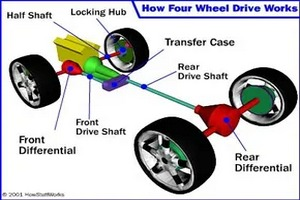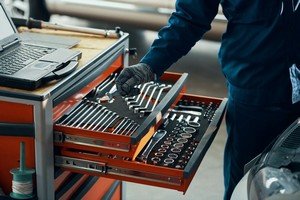
Choose Your Desired Option(s)
## Differential and Rear Axle Notes: A Comprehensive Guide
### Introduction
Understanding the differential and rear axle systems in a vehicle is crucial for automotive enthusiasts and professionals alike. These components play a vital role in ensuring smooth and efficient vehicle operation. This comprehensive guide covers the basics, functionality, and maintenance tips for differentials and rear axles.
### What is a Differential?
A differential is a gear system that allows the wheels of a vehicle to rotate at different speeds. This is essential when the vehicle is turning, as the outer wheels need to travel a greater distance than the inner wheels. The differential distributes torque to the wheels, ensuring balanced and efficient power distribution.
### Types of Differentials
1. **Open Differential**: The most common type, found in many vehicles. It provides equal torque to both wheels but can be inefficient on slippery surfaces.
2. **Limited Slip Differential (LSD)**: This type provides better traction by limiting the difference in speed between the wheels.
3. **Locking Differential**: Ensures both wheels rotate at the same speed, ideal for off-road conditions.
4. **Torque Vectoring Differential**: Advanced type used in high-performance vehicles to distribute torque dynamically to each wheel.
### Rear Axle Overview
The rear axle is a critical component connecting the differential to the wheels. It transmits power from the differential to the wheels, enabling movement. The rear axle’s design and robustness are vital for handling the vehicle’s load and power.
### Types of Rear Axles
1. **Semi-Floating Axle**: Common in light trucks and SUVs, supports the vehicle’s weight and transmits torque to the wheels.
2. **Full-Floating Axle**: Found in heavy-duty trucks, it carries the vehicle’s weight independently of the axle shaft.
3. **Three-Quarter Floating Axle**: A blend of semi-floating and full-floating designs, offering a balance between strength and simplicity.
### Maintenance Tips
1. **Regular Inspection**: Check for leaks, unusual noises, and wear. Early detection of issues can prevent major failures.
2. **Lubrication**: Ensure the differential and axle components are properly lubricated to reduce friction and wear.
3. **Alignment**: Proper wheel alignment is crucial for the optimal performance of the differential and rear axle.
4. **Load Management**: Avoid overloading the vehicle to prevent undue stress on the rear axle and differential.
### Common Issues and Solutions
– **Noise**: Whining or grinding noises often indicate worn-out gears or bearings. Regular maintenance can help identify and fix these issues early.
– **Leaks**: Oil leaks from the differential or rear axle can lead to lubrication problems. Regular checks and prompt repairs are necessary.
– **Vibration**: Excessive vibration may indicate misalignment or damaged components. Professional inspection and repair are recommended.
### Conclusion
Differentials and rear axles are integral to a vehicle’s performance and safety. Understanding their functionality, types, and maintenance can help ensure their longevity and efficiency. Regular maintenance and timely repairs are key to preventing costly issues and ensuring a smooth driving experience.
### Keywords for SEO
– Differential
– Rear Axle
– Types of Differentials
– Differential Maintenance
– Rear Axle Maintenance
– Vehicle Differential
– Car Axle
– Automotive Differentials
– Differential Noise
– Axle Lubrication
By incorporating these keywords and providing valuable information, this guide aims to enhance search engine visibility and provide readers with a comprehensive understanding of differentials and rear axles.
Share Now!





